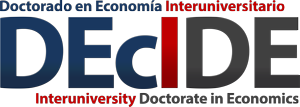An R&D endogenous growth model of international tourism
- Referencia: Albadalejo, I y M. P. Martínez-García: “An R&D endogenous growth model of international tourism”. 2025, Tourism Economics, August 2015, vol. 21(4), 701-719.
ABSTRACT According to the tourism area life cycle (TALC) model of Butler (1980), the evolution of a touristic destination follows an S-shaped curve which is upper-bounded by its carrying capacity, usually assumed to be a fixed constant. This forecast prevents a tourism-based economy from maintaining positive growth rates in the long run. However, infrastructures, transportation networks, accommodation facilities and the variety of attractions can be broadened to increase the tourism carrying capacity. In this paper, innovation is the motor of carrying capacity growth. The model follows the tradition of R&D-based endogenous growth models and allows the long-run sustainability of economic growth in a tourism-specialized economy. Along a balanced growth path, the income from tourism grows at the same rate as the innovation, and the carrying capacity will grow as the rate of innovation surpasses the foreign economic growth rate. The long-term growth of the economy depends on the real exchange rate.

